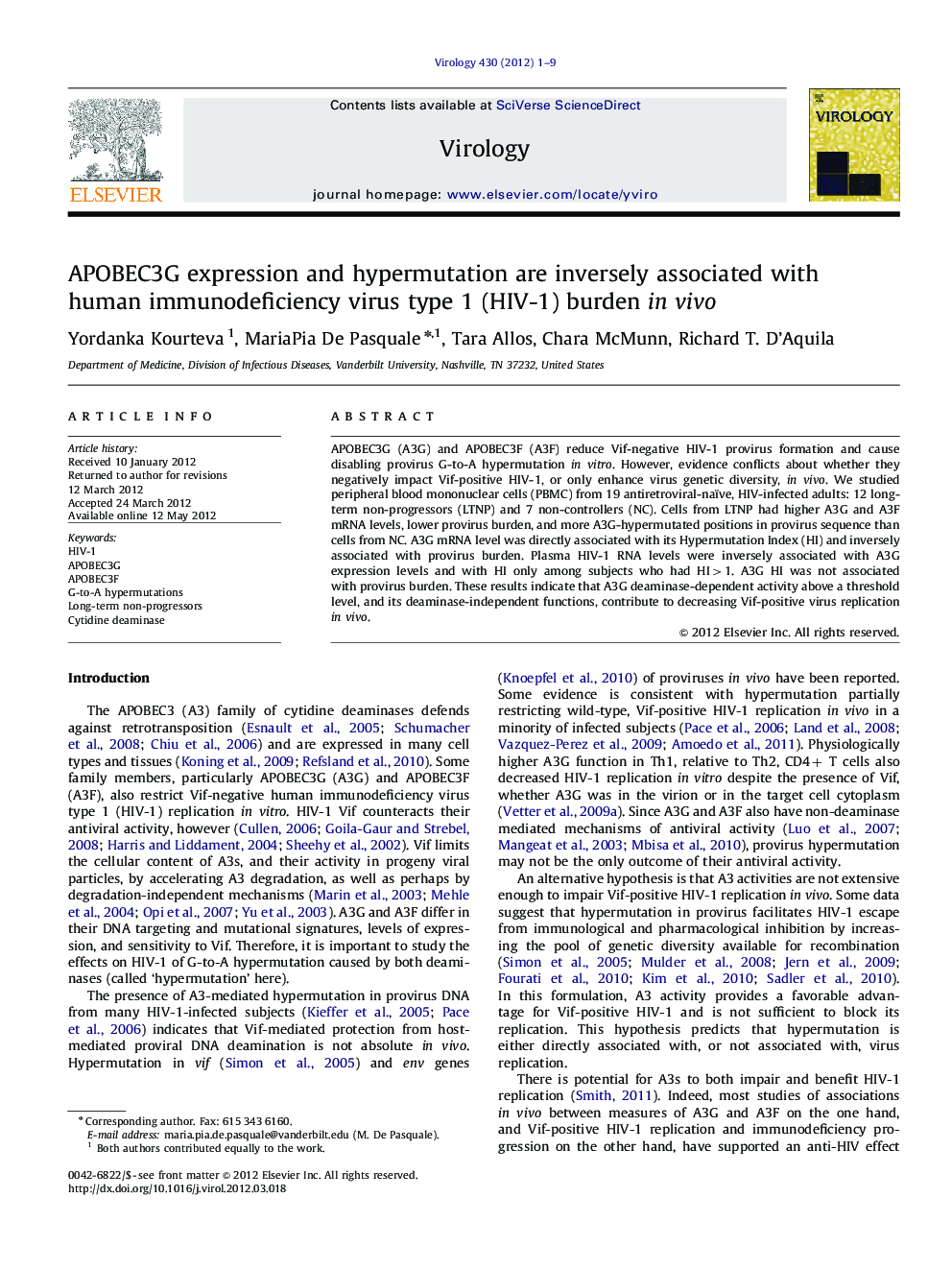| Article ID | Journal | Published Year | Pages | File Type |
|---|---|---|---|---|
| 3424261 | Virology | 2012 | 9 Pages |
APOBEC3G (A3G) and APOBEC3F (A3F) reduce Vif-negative HIV-1 provirus formation and cause disabling provirus G-to-A hypermutation in vitro. However, evidence conflicts about whether they negatively impact Vif-positive HIV-1, or only enhance virus genetic diversity, in vivo. We studied peripheral blood mononuclear cells (PBMC) from 19 antiretroviral-naïve, HIV-infected adults: 12 long-term non-progressors (LTNP) and 7 non-controllers (NC). Cells from LTNP had higher A3G and A3F mRNA levels, lower provirus burden, and more A3G-hypermutated positions in provirus sequence than cells from NC. A3G mRNA level was directly associated with its Hypermutation Index (HI) and inversely associated with provirus burden. Plasma HIV-1 RNA levels were inversely associated with A3G expression levels and with HI only among subjects who had HI>1. A3G HI was not associated with provirus burden. These results indicate that A3G deaminase-dependent activity above a threshold level, and its deaminase-independent functions, contribute to decreasing Vif-positive virus replication in vivo.
► A3G mRNA levels strongly correlates to A3G hypermutation index in proviral Vif. ► Mutational activity of A3G and A3F is higher in cells of LTNP in comparison to NC. ► A3G mRNA levels in PBMCs correlates with fewer integration events. ► A3G and A3F RNA levels in PBMC are inversely associated with HIV-1 viral load. ► A3G hypermutation index correlates inversely with plasma viral load.
